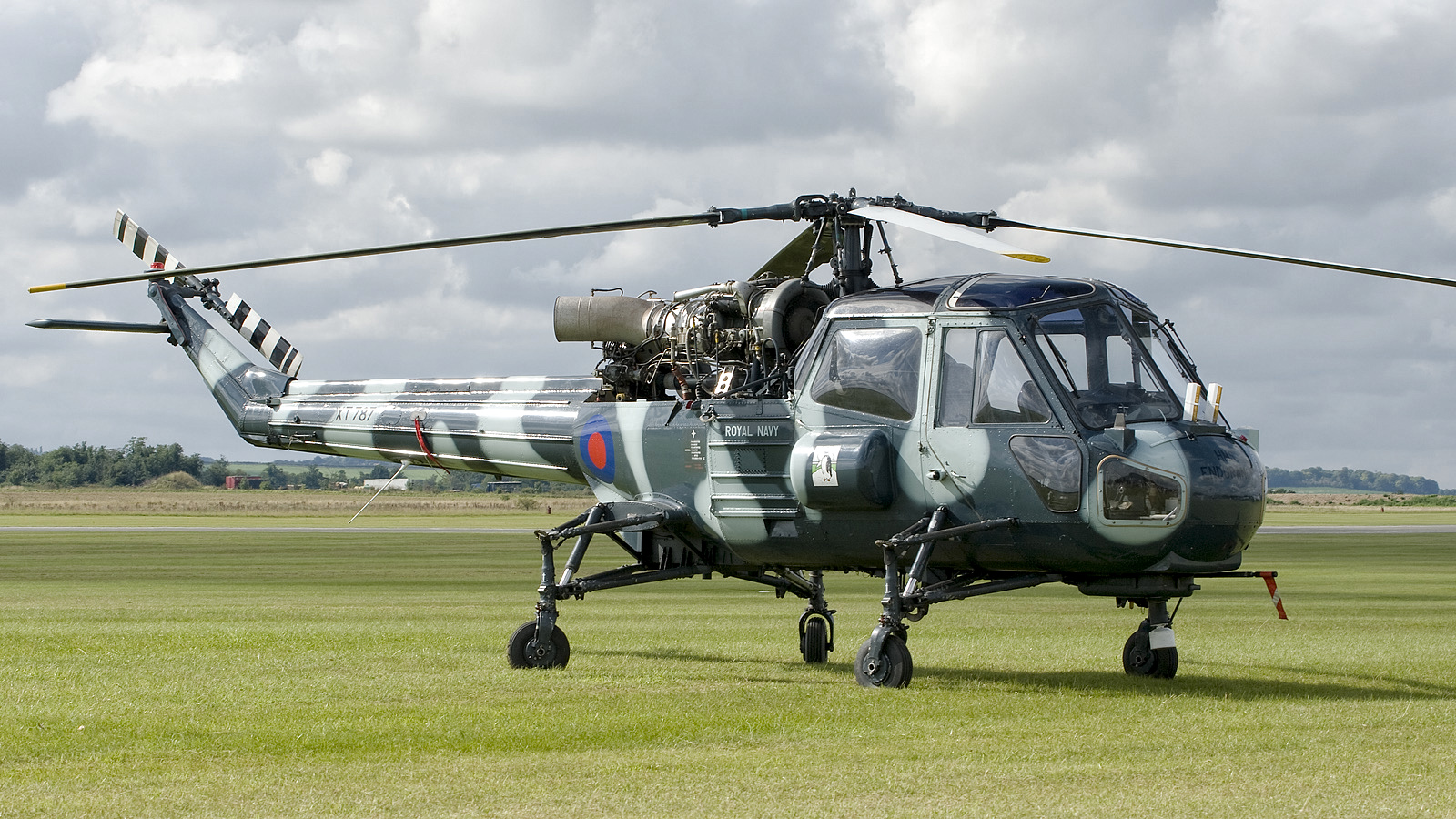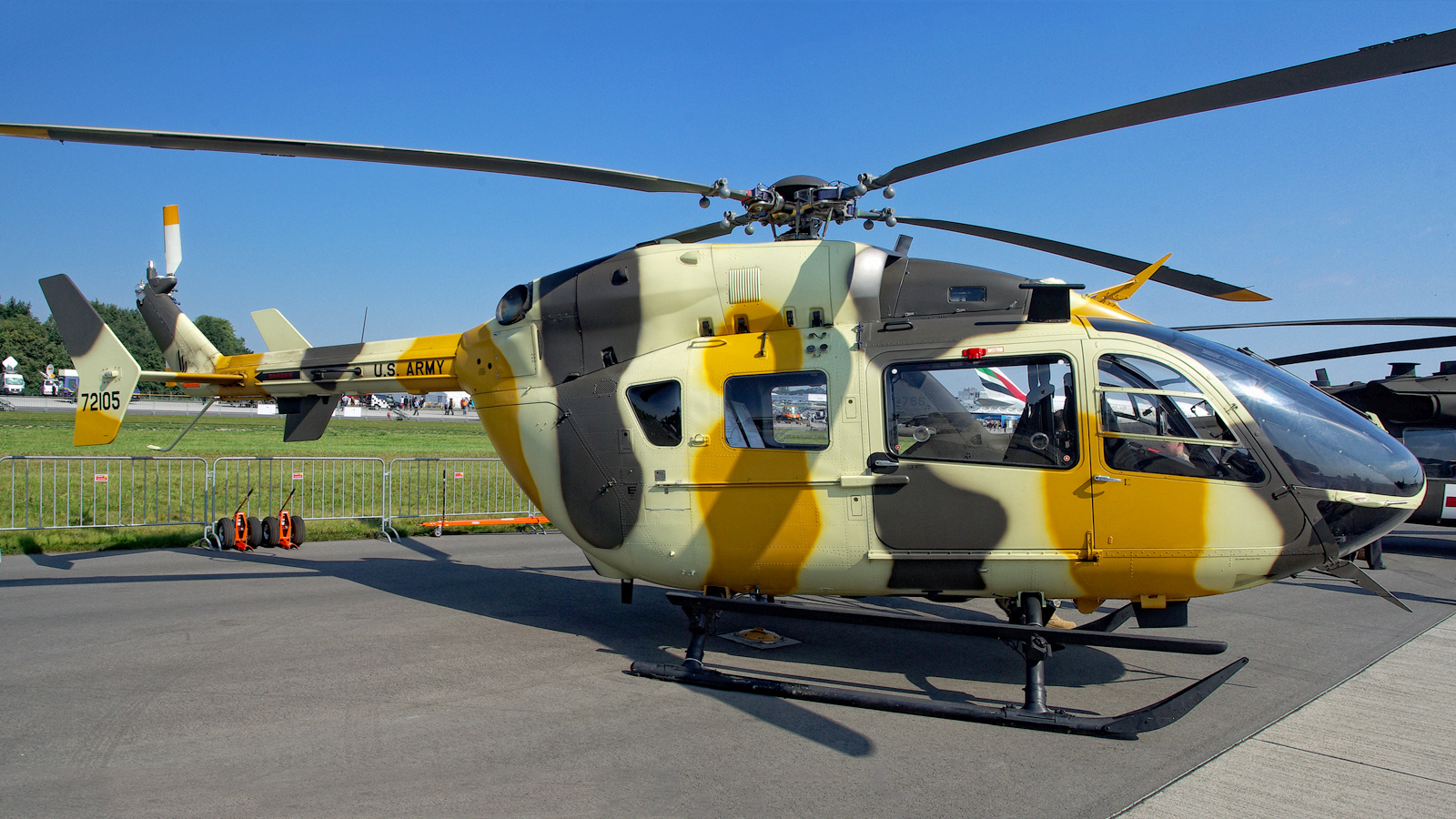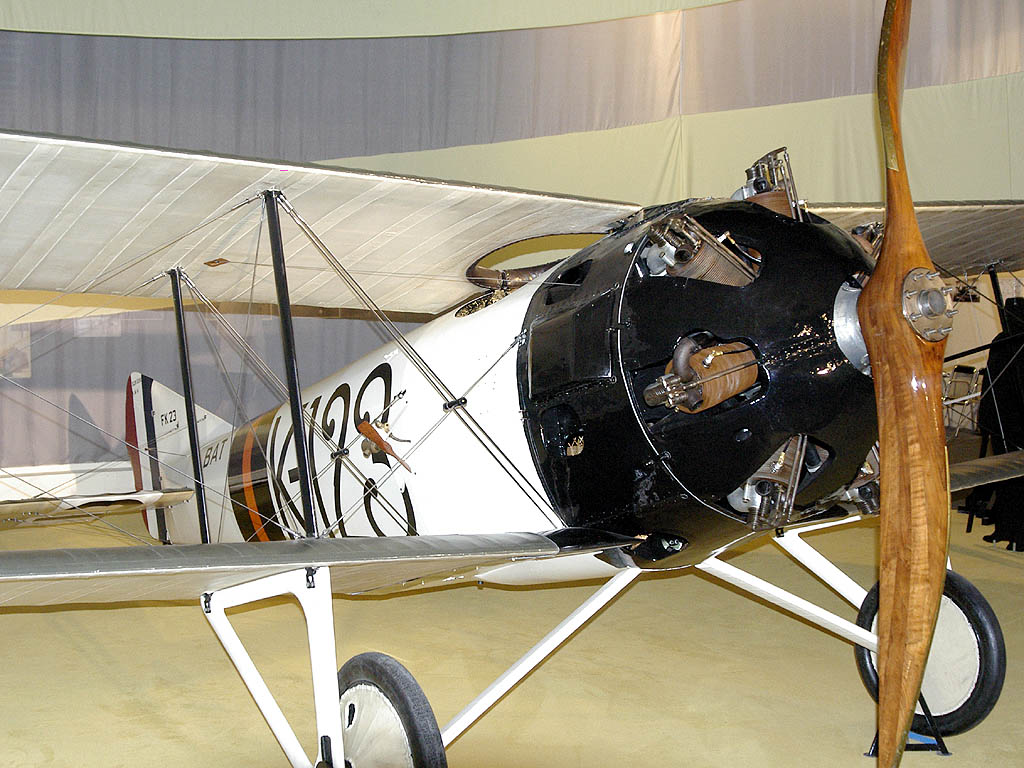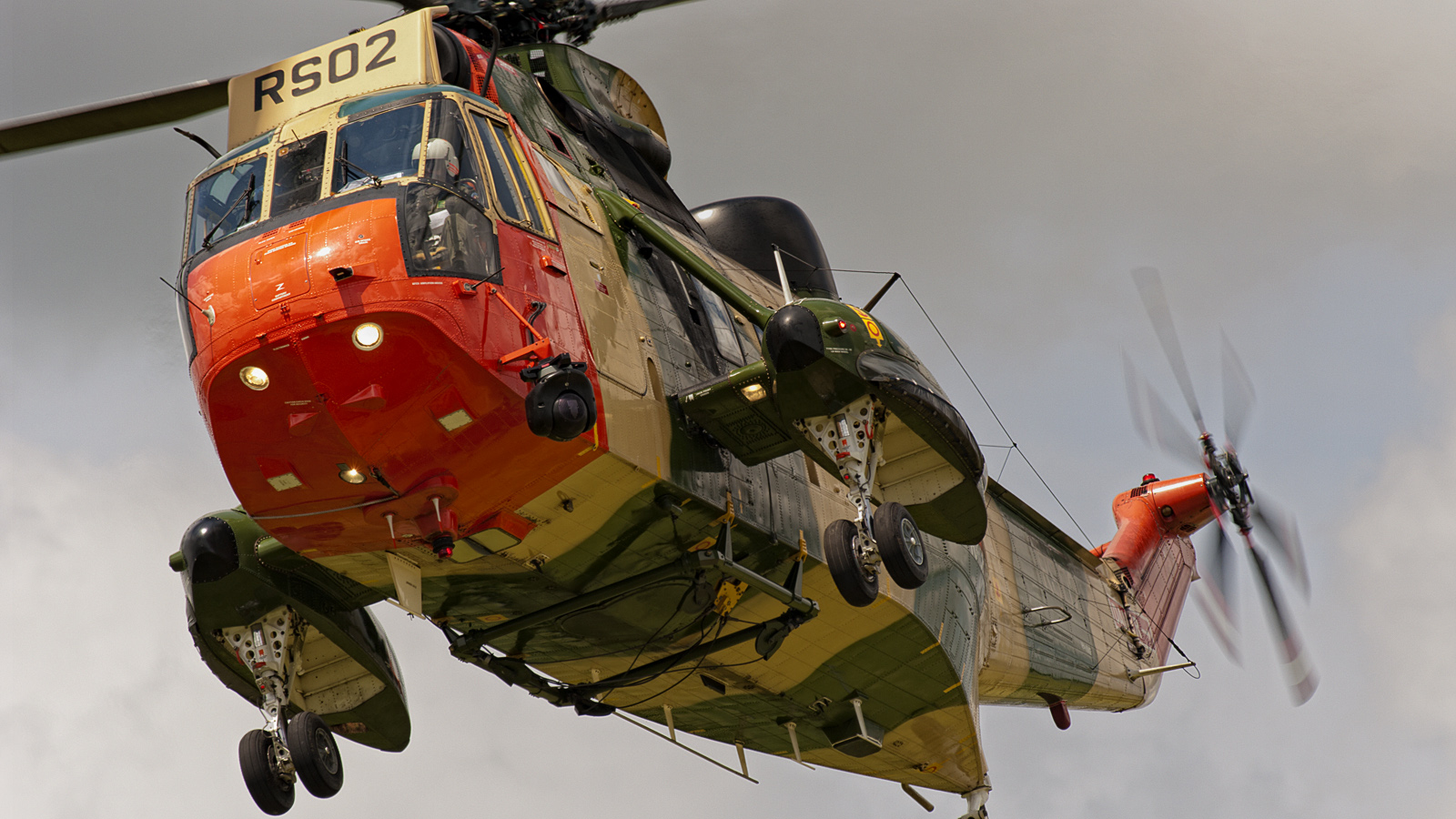
The Westland Wasp was a British small first-generation, gas-turbine powered, shipboard anti-submarine helicopter. Produced by Westland Helicopters, it came from the same P.531 programme as the British Army Westland Scout (The Scout is the land based utility variant), and was based on the earlier piston-engined Saunders-Roe Skeeter. Several Skeeter components were used in their construction, including the tailboom, short-legged tricycle undercarriage and rotor blades.
Developing nation: United Kingdom.
Manufacturer/designer: Westland Helicopters.
Number built: 150 Scout and 133 Wasp.
Type aircraft: shipboard anti-submarine helicopter.
First flight: 20 July 1958 G-APNU.
Retired: 2000 Royal Malaysian Navy.
The first prototype Saro P.531 (G-APNU) flying on 20 July and the second (G-APNV) on 30 September 1958. With the prototypes being subject to detailed testing by the Royal Navy, including the evaluation of several different undercarriage layouts, before settling on the definitive arrangement. An order for a pre-production batch of two “Sea Scouts” was placed in September 1961. The first flight of the two pre-production Wasp took place on 28 October 1962. Full production soon commenced, 98 in total being procured for the RN. The Wasp HAS Mk.1 entered service in October 1963, and first production machines were allocated to No.829 Squadron and deployed singly aboard the Royal Navy’s seven Tribal class and seven Leander class frigates. Nine ships operated Wasps during the Falklands War of 1982. Wasps from the ice patrol ship HMS Endurance took part in the attacks, which crippled the Argentine submarine Santa Fe during the Falklands War. A weapon load of some 244kg can be attached to the underside between the undercarriage legs; this may comprise two Mk.44 homing torpedoes or an equivalent weight of depth charges or bombs. The Wasp successfully exported to Brazil, the Netherlands, Indonesia, Malaysia, New Zealand and South Africa.150 Scout and 133 Wasp aircraft were built in total.
Scout
Unlike its naval counterpart, the Scout did not achieve the same export success as the Wasp, with the Royal Jordanian Air Force acquiring three helicopters, two were operated in Uganda, and Bahrain had two helicopters which were operated by the Bahrain Public Security Force in police service roles. Unfortunately the Scout never received civilian air worthiness certification.
Operators
Brazilian Navy (10)
Indonesian Navy (10) all former Dutch aircraft
Royal Malaysian Navy
- Royal Netherlands Navy – Dutch Naval Aviation Service (12)
Royal New Zealand Navy (19)
- No. 3 Squadron RNZAF.
South African Navy (16)
Royal Navy – Fleet Air Arm (98)
-
- 700W Intensive Flying Trials Unit
- 703 Naval Air Squadron
- 706 Naval Air Squadron
- 829 Naval Air Squadron
- 845 Naval Air Squadron
- 848 Naval Air Squadron
Variants
- P.531 Prototype.
- Sea Scout HAS.1 The Sea Scout HAS.1 was the original Royal Navy designation for the Wasp.
- Wasp HAS.1 Shipboard anti-submarine warfare helicopter for the Royal Navy.
General characteristics
- Crew: One pilot, one Aircrewman
- Capacity: up to four passengers
- Length: inc rotor 12.30 m (40 ft 4 in)
- Rotor diameter: 9.83 m (32 ft 3 in)
- Height: 2.72 m (8 ft 11 in)
- Disc area: 75.9 m² (816.9 ft²)
- Empty weight: 1,569 kg (3,452 lb)
- Max takeoff weight: 2,500 kg (5,500 lb)
- Powerplant: 1× Rolls-Royce Nimbus 103 turboshaft, 1,050 shp (783 kW)
Performance
- Maximum speed: 193 km/h (120 mph, 104 knots)
- Cruise speed: 177 km/h (110 mph, 96 knots)
- Range: 488 km (303 miles, 263 NM)
- Service ceiling: 3,720 m (12,200 ft)
- Rate of climb: (7.3 m/s) 1,440 ft/min)
- Disc loading: 33 kg/m² (6.75 lb/ft²)
- Power/mass: 0.31 kW/kg (0.19 hp/lb)
Armament
- Naval: 2 x Mk 44 or 1x Mk 46 torpedo or 2 x Mk 44 depth charges or WE.177 600lb Nuclear Depth Bomb. Attack: 4 x SS-11 replaced by 2 x AS.12 missiles.
- General: GPMG, 4.5 Flares, Smoke/flame floats.
All pictures courtesy of Zijde Aviation Photo and Publishing, Rob Vogelaar / Marcel van Leeuwen






